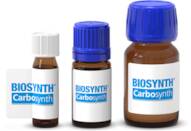
Información del producto
- 2(3H)-Furanone, 5-methyl-
- 2,3-Dihydro-5-methylfuran-2-one
- 2-Oxo-5-methyl-2,3-dihydrofuran
- 3-Pentenoic acid, 4-hydroxy-, γ-lactone
- 4-Hydroxy-3-pentenoic acid gamma-lactone
- 4-Hydroxy-3-pentenoic acid γ-lactone
- 4-Hydroxypent-3-enoic acid lactone
- 5-Methyl-2(3H)-furanone
- 5-Methyl-2,3-dihydro-2-furanone
- 5-methylfuran-2(3H)-one
- Ver más sinónimos
- Angelicalactone
- NSC 654
- Pent-3-en-4-olide
- alpha-Angelicalactone
- Δ<sup>2</sup>-Angelica lactone
- α-Angelicalactone
- β,γ-Angelica lactone
- γ-Angelica lactone
Please enquire for more information about α-Angelica lactone including the price, delivery time and more detailed product information at the technical inquiry form on this page
Propiedades químicas
Consulta técnica sobre: 3D-FA106390 α-Angelica lactone
Si desea solicitar un presupuesto o realizar un pedido, por favor añada los productos deseados a su carrito y solicite un presupuesto o pedido desde el carrito. Es más rápido, más barato, y podrá beneficiarse de los descuentos y las ventajas disponibles.





